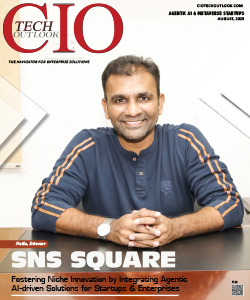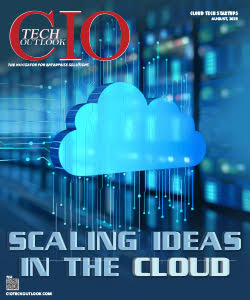How to Choose the Right HRMS for Business
Hridkamal Roy, Assistant Editor, CIOTechOutlook | Saturday, 11 May 2024, 04:49 IST
 The global human resource (HR) technology market size is projected to grow from $40.45 billion in 2024 to $81.84 billion by 2032, at a CAGR of 9.2% according to Fortune Business Insights. Purchasing a HRMS software has become one of the fundamental needs for organizations today, especially from after COVID-19. In order to maintain uniformity within a remote workforce, HRMS systems have become an utter necessity in terms of hiring, onboarding, payroll management, leave and attendance, compliance and others. Organizations are slowly starting to understand the significance of HR tech and if they want to provide consumer satisfaction, it is equally important to pay attention to the satisfaction of the workforce.
The global human resource (HR) technology market size is projected to grow from $40.45 billion in 2024 to $81.84 billion by 2032, at a CAGR of 9.2% according to Fortune Business Insights. Purchasing a HRMS software has become one of the fundamental needs for organizations today, especially from after COVID-19. In order to maintain uniformity within a remote workforce, HRMS systems have become an utter necessity in terms of hiring, onboarding, payroll management, leave and attendance, compliance and others. Organizations are slowly starting to understand the significance of HR tech and if they want to provide consumer satisfaction, it is equally important to pay attention to the satisfaction of the workforce.
“If you want to deliver a better customer experience, you need to provide a better experience to your own people. In addition, the omnipresence of digital experiences in our daily lives and high engagement expectations from our workforce are further driving organizations to increase the allocation to HR Tech in their budgets”, mentioned Babu Thiagarajan, Head - Technology, Fidelity International, India.
However, before choosing a HRMS software, it is important for businesses to thoroughly evaluate a few important factors. A proper evaluation will not only lead to incorporation of the required HRMS software, but also add value to the core business of the organization.
Understanding Business Requirements
Before choosing a HRMS software, it is very important for an organization to understand the exact requirements that needs to be fulfilled by the system. Here, it is necessary to understand that the HRMS software will be laying the foundation of the entire company on the grounds of compliance, employee engagement and attendance, payroll management and other core business processes. A clear identification of pain points and defects must be done and only then the HRMS software must be put to work. Only then will an implementation will be able to properly streamline the workflows.
A HRMS software that is often praised for its ability to align with client business requirements is Workday. It offers a suite of HR solutions that can be customized to meet the specific needs of different organizations. Its flexibility, scalability, and advanced features make it a popular choice for businesses of various sizes and industries.
Defining Organizational Goals
Prior to taking up a HRMS software, it is important for businesses to determine the objectives that needs to be achieved through it. Only detecting the pain points will not be enough in this regard. A clear understanding of what the HRMS software will be able to achieve for the business is primary here. There can be many premium HRMS solution providing software in the market but businesses must always go for those which have the capability to achieve the required organizational goals and streamline all the workflows.
“CIOs would be well served to view it as a great opportunity to truly think about a future state HR Tech architecture and start to build out the components aligned with it. For example, instead of just implementing the next HRMS it would be beneficial to first think about how best to organise and leverage People Data by focusing on aspects such as golden source, mastering, security, analytics, etc.”, mentioned Thiagarajan.
One of the popular HRMS software that is known for its ability to help businesses achieve their organizational goals is BambooHr. It offers a range of features designed to streamline HR processes, enhance employee management, and foster a positive work culture. BambooHR allows businesses to set and track goals for individual employees, teams, and the organization as a whole.
Checking Security and Compliance
Integrating a HRMS software into business process also means surrendering crucial business data into an unknown hands. No matter how trusted a solution is or how much of a user friendly interface it can provide, it won’t ultimately matter if it lacks in security and compliance features. The growing threat of cyber-attacks across the globe has made software solution providers realize the importance of building security features which are hack-proof. This is why consumers of these solutions must always take this under consideration before deciding on the correct HRMS software in order to avoid cyber-attacks with crucial business data being compromised.
A company that is known for its robust security and compliance features in the realm of HRMS software is ADP Workforce Now. ADP prioritizes data security and compliance with industry standards and regulations, such as GDPR and SOC 2 compliance. It offers advanced security measures like multi-factor authentication, role-based access control, data encryption, and regular security audits to safeguard sensitive HR information.
Apart from the above, there are a few other aspects that need consideration like user friendly UI, customization options, vendor reputation and support options before choosing the right HRMS software. The industry has seen the mergence many advanced technologies in the HR tech domain which have been able to look at each one of the above aspects and offer clients with the exact solutions for their organizational needs.



.jpg)
